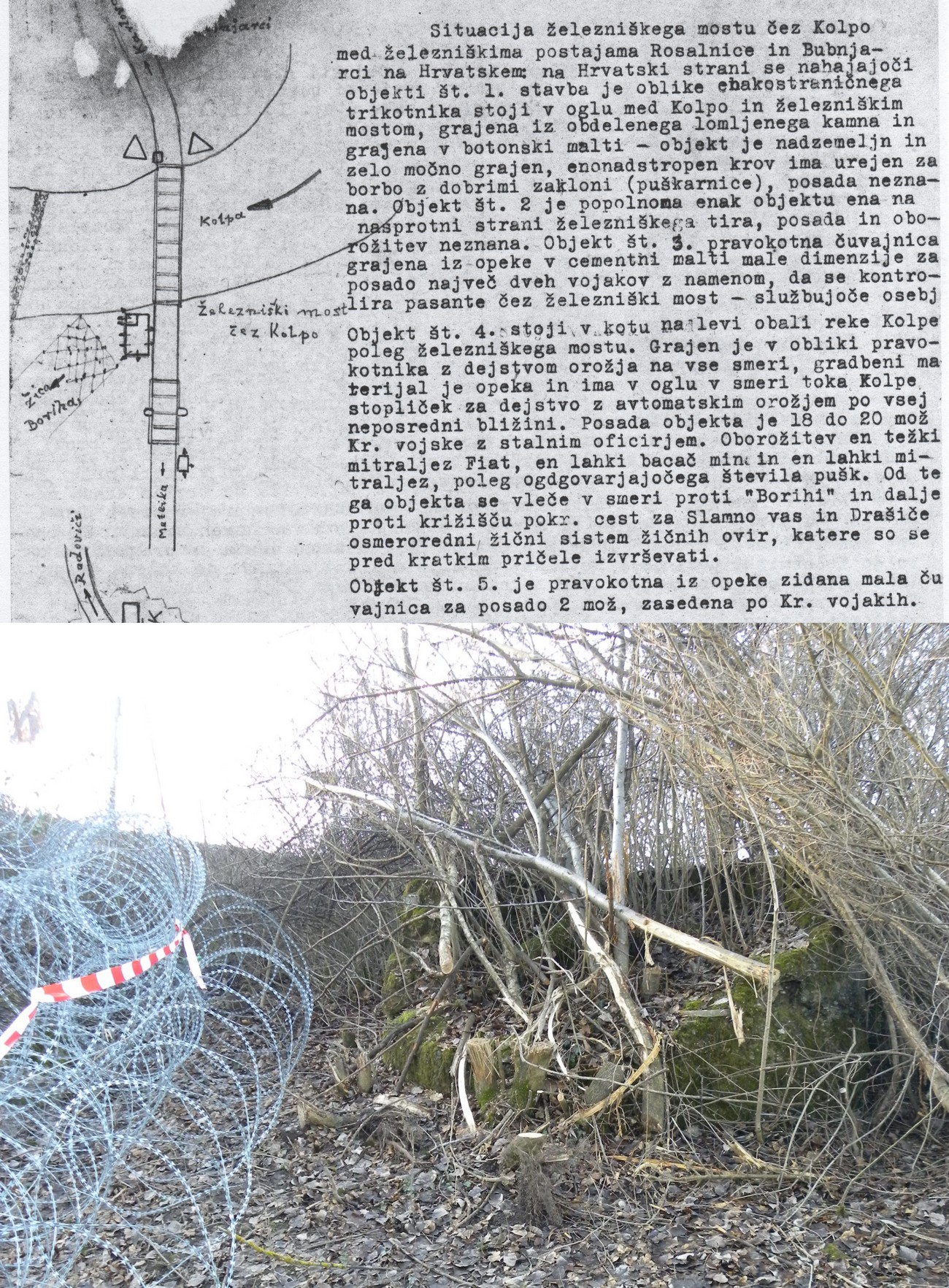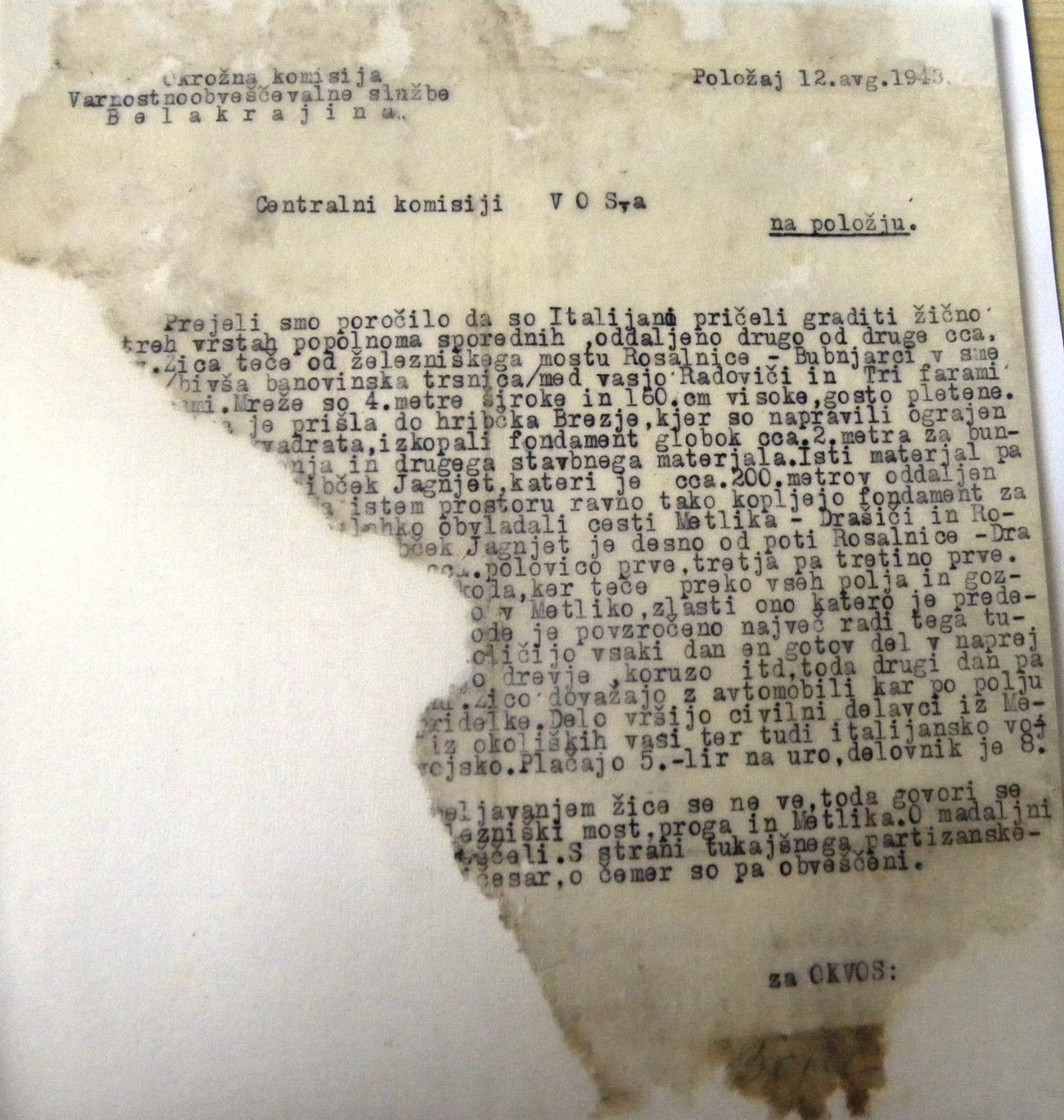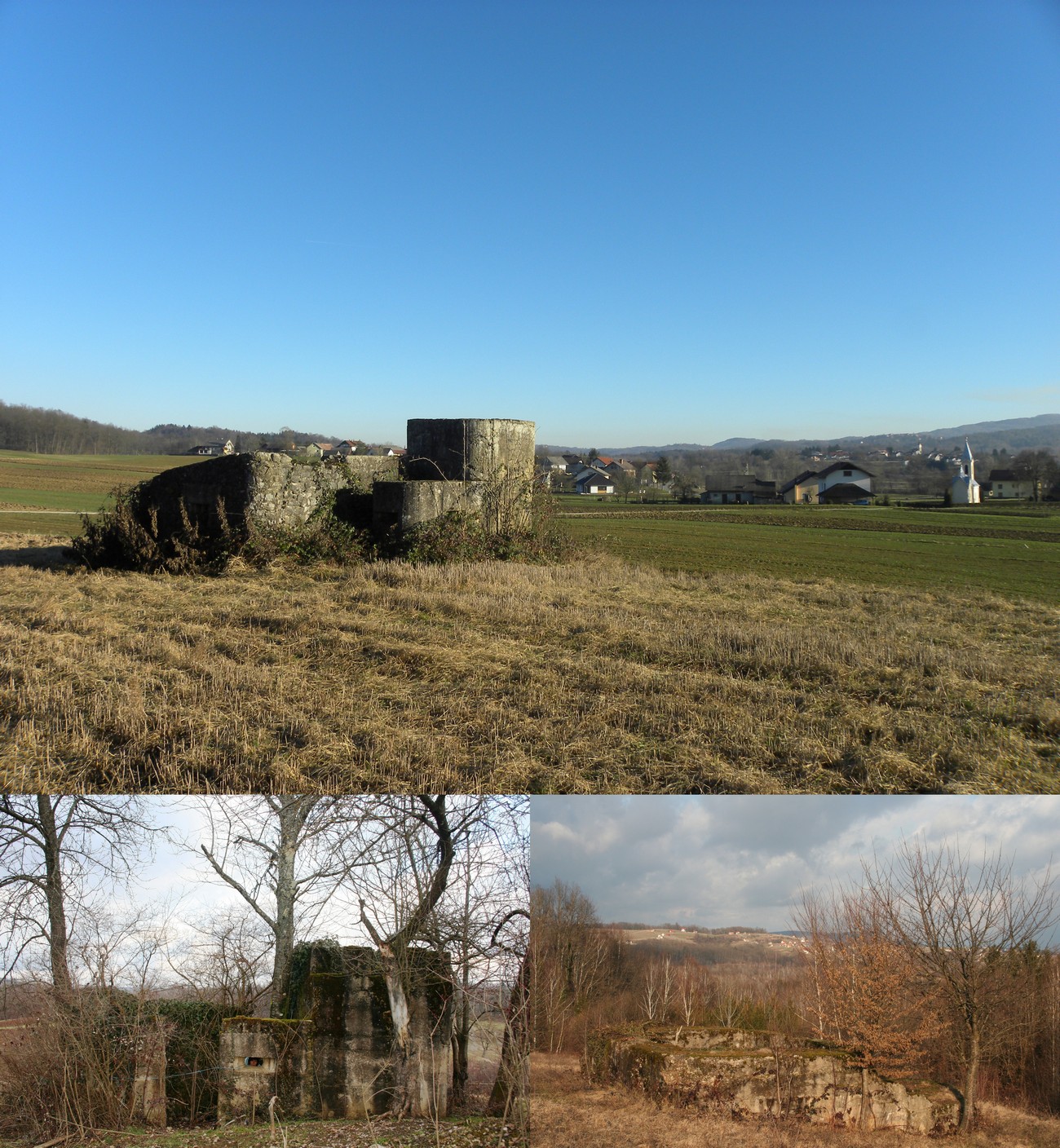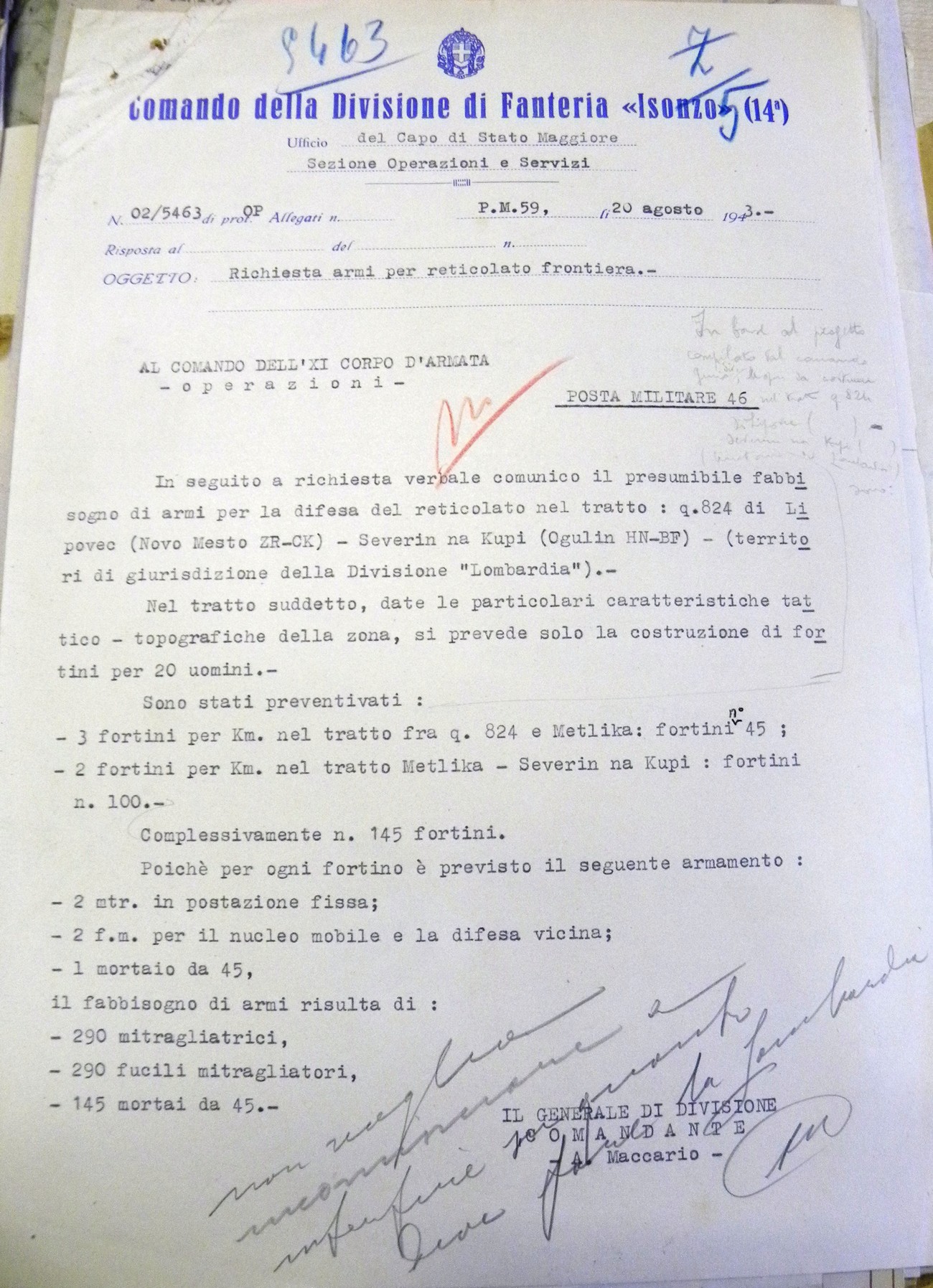On 13 January 1943, the Italian Army started building a fortified borderline, consisting of a zone of barbed wire, bunkers, stronger forts and border crossings. It ran from the Krka River east of Kostanjevica, where it continued in a SE direction; it ran through villages, forests, vineyards and fields at the foothills of the Gorjanci/Žumberak mountain range; on 8 September 1943, it stopped, unfinished, measuring about 26 km in length, at the settlement of Pušče near the village of Dolž pod Gorjanci. The main purpose of the fortified borderline was to prevent partisans from crossing over from Žumberak and Gorjanci to the villages beneath the Gorjanci/Žumberak mountain range and to the villages of Bela krajina, thus preventing them from gathering food supplies.
In February or early March 1943, Benito Mussolini gave the commander of the 11th Corps G. Gambara the following order regarding the closure of the border with the NDH: »finish the barbed wire in the shortest time possible to prevent the arrival and departure of communist bandits from Croatia to Slovenia and vice versa«.
The construction of a fortified zone of barbed wire for closing the border with the NDH began in Bela krajina on 22 July 1943. The works were carried out by the engineer unit of the Italian Army and by civilian workers.
At first, they prepared the building material (reels of barbed wire, wooden poles) and thinned the forest along the planned route (they planned to thin the forest over a 250 m wide area on the outer side of the barbed wire and 10-50 m wide on the inner side of the barbed wire). The barbed wire reached the junction of the roads leading to Slamna vas and Drašiči on 14 August 1943. By then, a roughly 2 km zone of barbed wire had been set up.
By thinning the forest in August 1943, they continued along the planned route of the barbed wire towards the Church of St Urban in Grabrovec. Towards the end of August 1943, they began setting up barbed wire in that section of the route. The Italian sentries, who guarded the construction of the barbed wire fence, had positioned themselves even earlier, on 14 August 1943, around the Church of St Urban in Grabrovec and in its bell tower. It was planned that the zone of barbed wire and bunkers would continue from Grabrovec in a NW direction past Popoviči to two hills at the W edge of the Gorjanci/Žumberak mountain range, where it was to join the zone of barbed wire coming from the direction of the village of Dolž.
Along the route of the barbed wire between the Kolpa River and the Gorjanci/Žumberak mountain range, they planned 45 bunkers with armed guards,which means that they planned 3 bunkers for each kilometre of wire. They never carried it through because Italy capitulated on 8 September 1943. On 19 August 1943, a partisan informant reported about the first line of barbed wire and bunkers, which ran from the Kolpa River towards Žumberak and the Gorjanci/Žumberak mountain range. According to the informant, the Italian Army planned to build two more lines: »The second line of a barbed wire obstacle in 8 rows winds its way from the Kolpa River behind the house of the miller Ivanetič in Radoviči and between the chapel located about 50 m behind the mentioned roadside house. The route of the barbed wire obstacle will continue to wind its way towards the road leading to Drašiči and onward towards Vinomer and in the direction of Radovica and Ostriž. As far as I can tell, a third route will be built somewhere near Božakovo and in the same direction towards Drašiči and onward in the direction of Kašt.«



